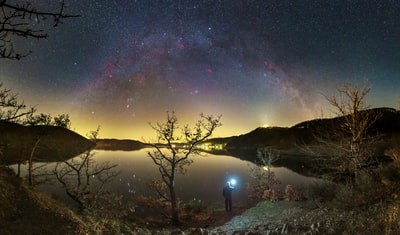Introduction to Space

As the Universe expanded, it also became transparent. Between the empty space of the atoms radiation was able to pass through. This period of time, known as the Dark Age of the Universe, is when background microwave radiation was formed. For a few billion years the Universe was only dark, empty space, filled with helium and hydrogen. After that, the stars and galaxies appeared.
——————————————————
Chemical elements in space
Light elements were created due to fusion within stars. Hydrogen, helium and sometimes carbon, which contains small nuclei, fuse together. During the red giant stage larger nuclei form due to fusion with helium and other elements with small nuclei. Nuclear fusion then stops once iron is formed as too much energy is required to fuse this element.

Planets are formed in a similar way, from supernova debris being brought together by gravity. This means that planets are also formed from all the known elements. Uranium is the heaviest known element and has a radioactive half-life of 4,500 million years. This is proof that Earth must have been formed from a supernova explosion.
Attempts are being made today to see if there could be, or is, other life in space. Two ways in which this is being done are:
- –
space probes have been sent to Mars to try and detect chemicals and microbes in the soil, rocks and atmosphere which might signify life
- – radio telescopes are used in the Search for Extra-Terrestrial Intelligence (SETI) to search for technological signals from other life forms however, for the last four decades, nothing has been picked up yet
